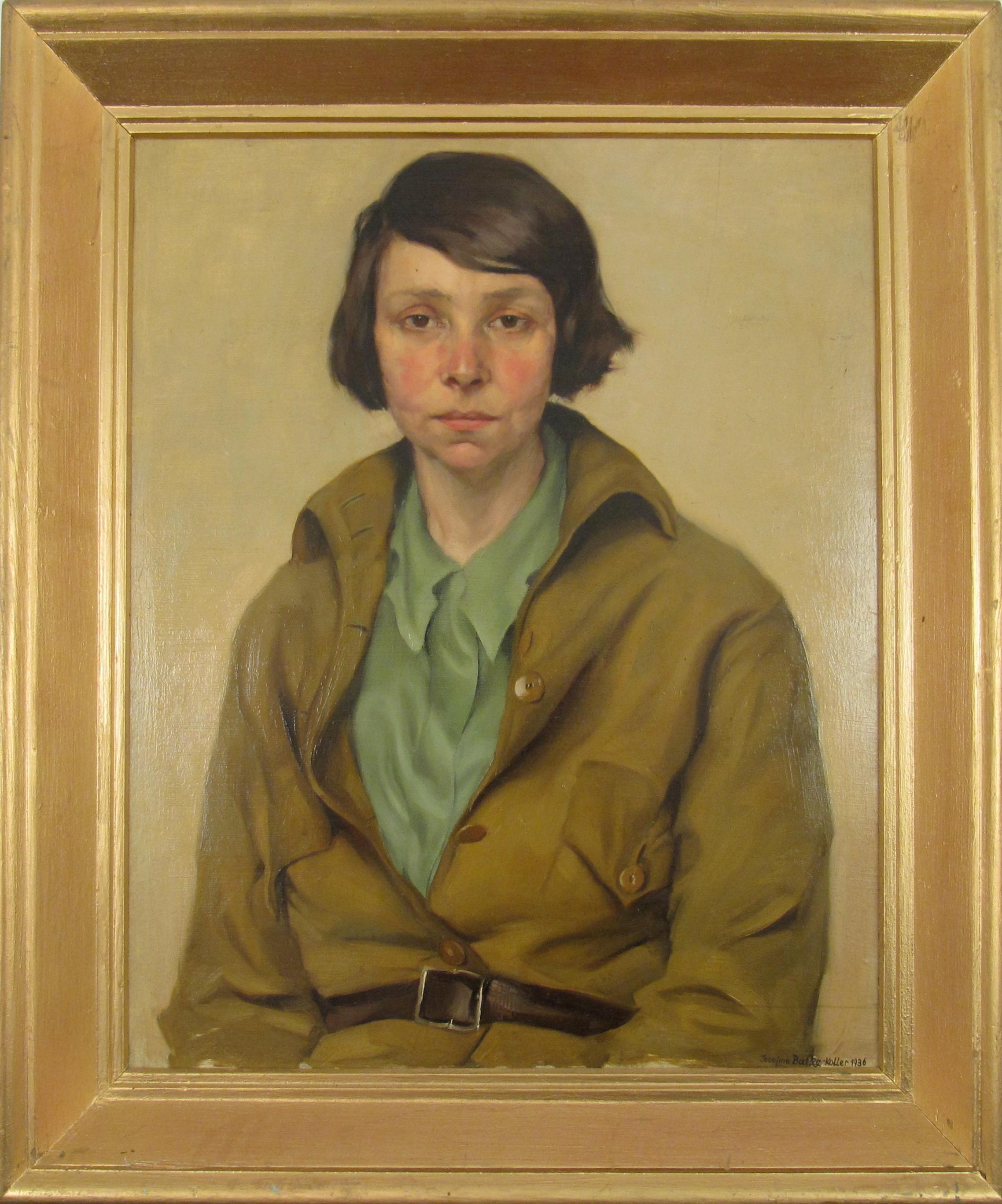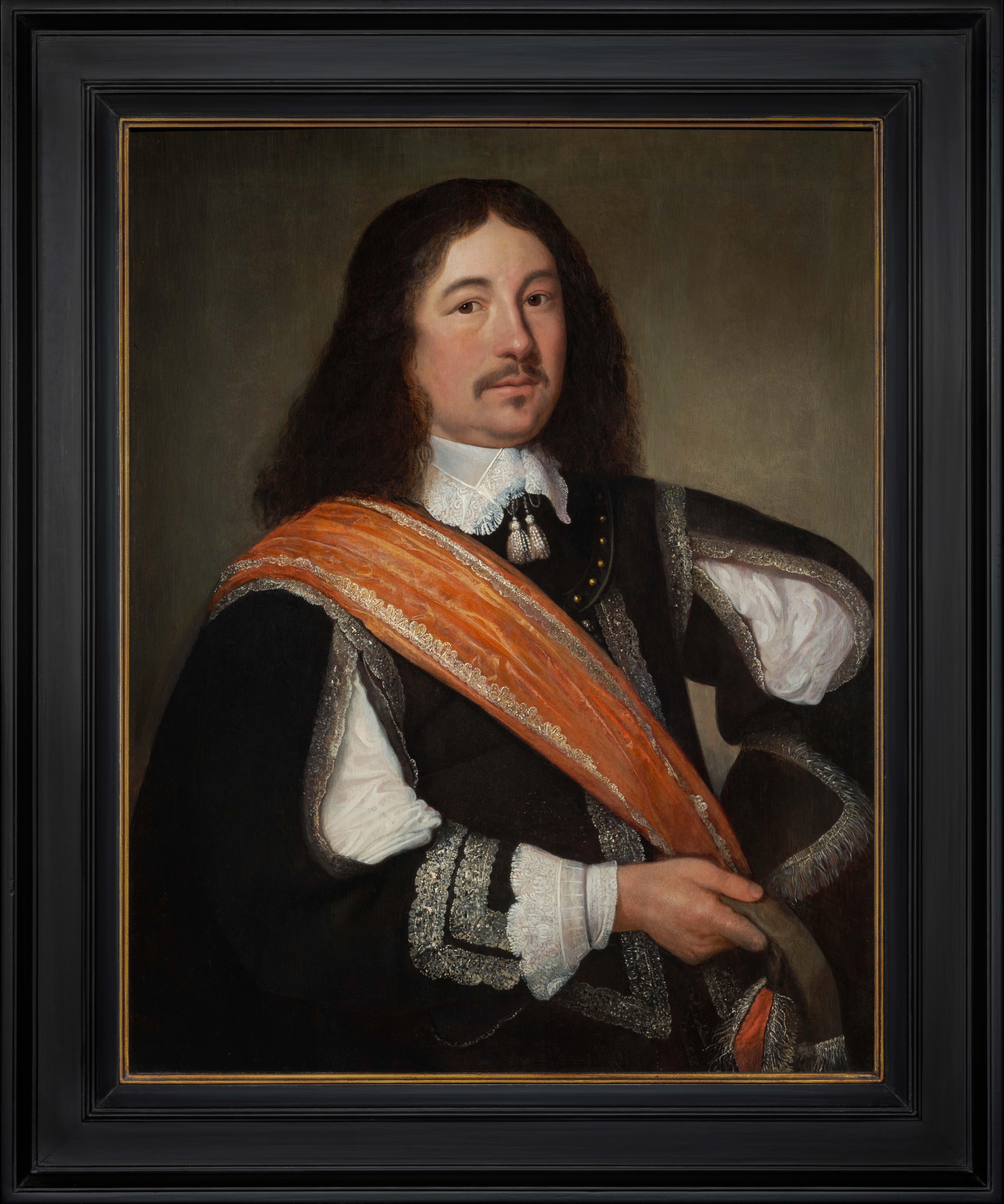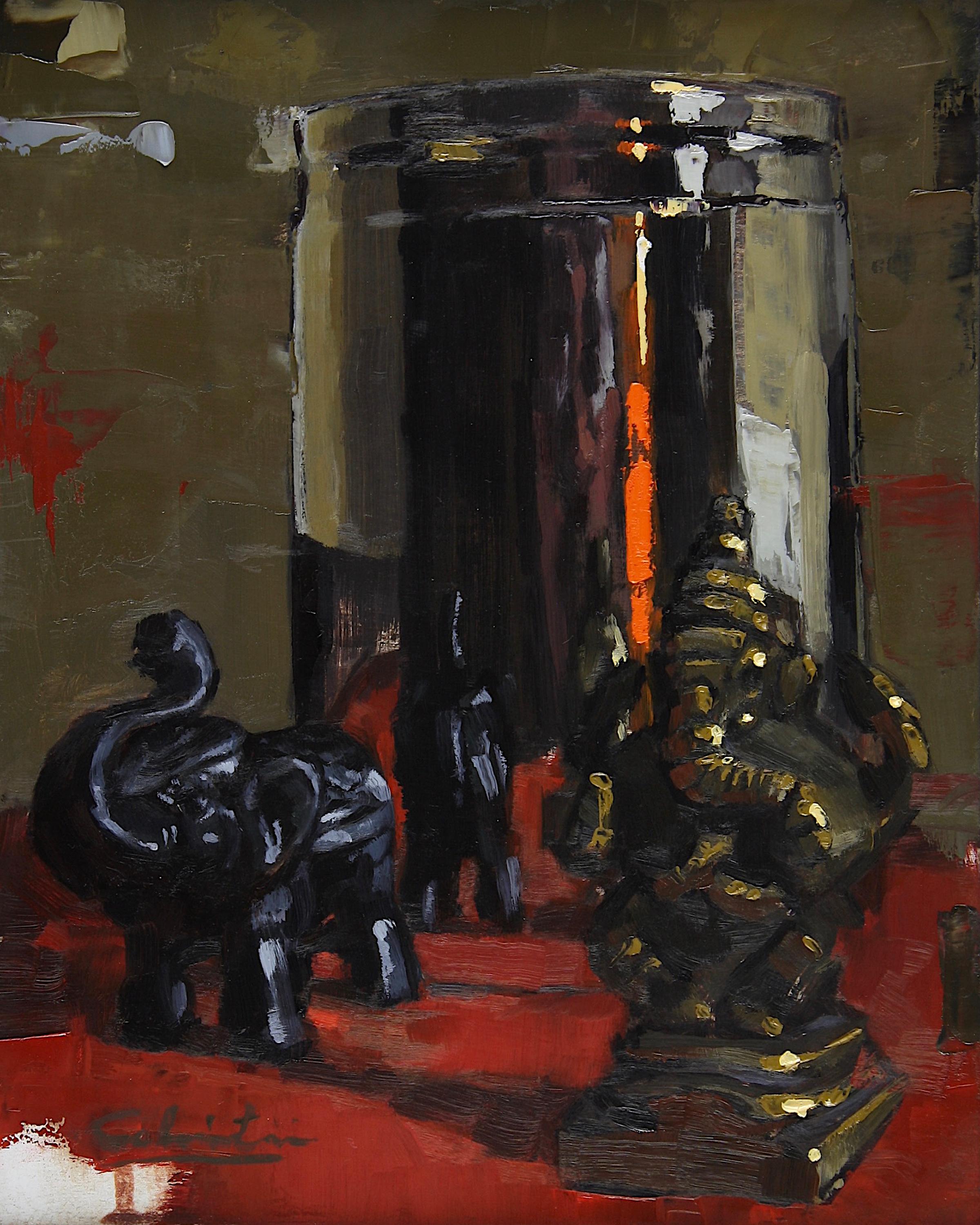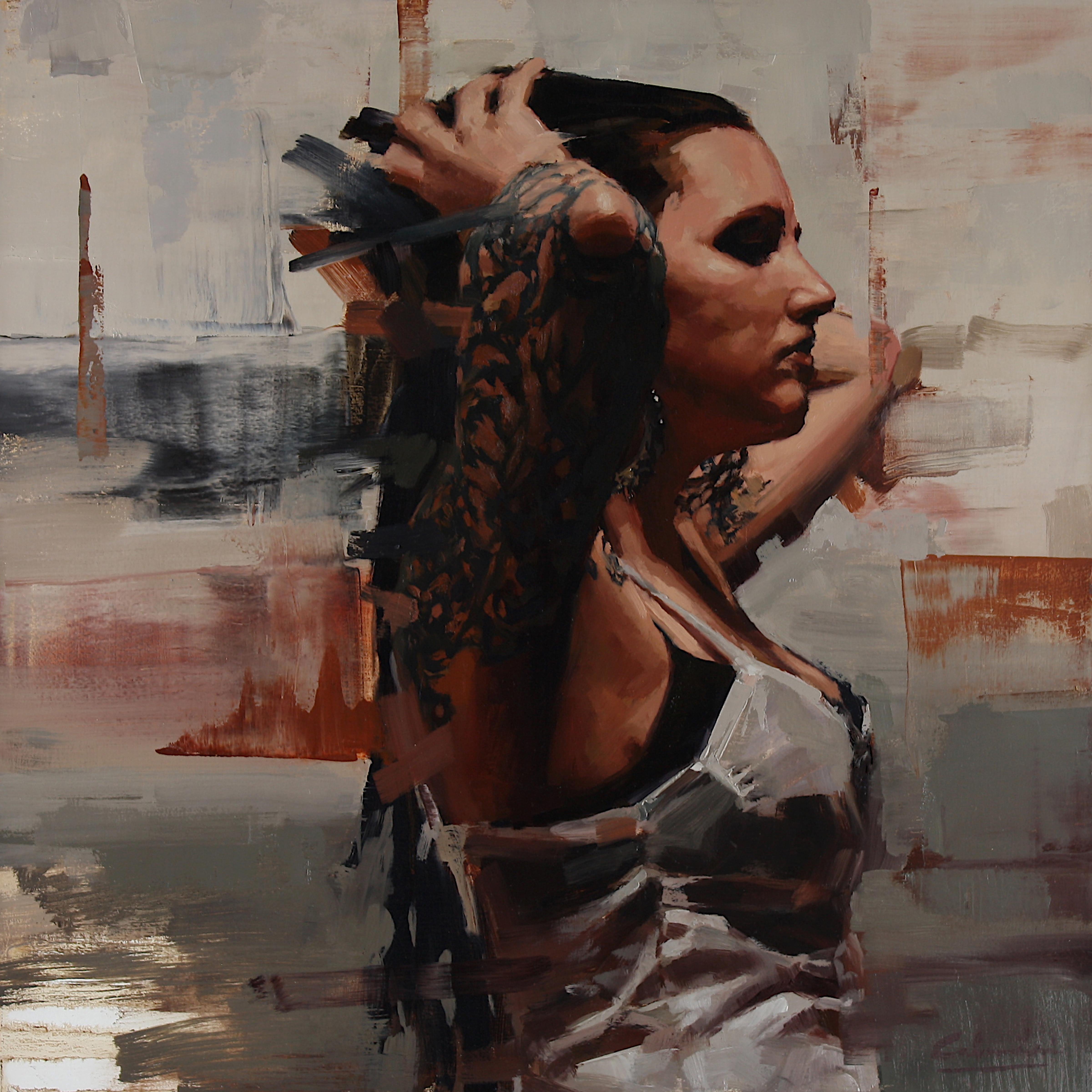Items Similar to The Crucifixion
Want more images or videos?
Request additional images or videos from the seller
1 of 4
Flemish School, 17th CenturyThe Crucifixion
About the Item
The Flemish School, also known as the Northern Renaissance, the Primitive Flemish School and the Early Dutch School, refers to artists active in Flanders during the 15th and 16th centuries, particularly in the the cities of Bruges and Ghent. The three most prominent painters of the period – Jan van Eyck, Robert Campin and Rogier van der Weyden – are known to have made significant strides in illusionism, or the realistic and accurate depiction of people, spaces and objects. The Flemish School’s favorite subjects were often religious in nature, but small portraits were also popular. The majority of these works are in the form of plates, simple altars or more complex altars, often in diploid or polyploid form.
During the 15th and 16th centuries, the Netherlands became a political and artistic center centered around the cities of Bruges and Ghent. The Flemish school arose almost at the same time as the Italian Renaissance. However, while the Italian Renaissance was based on a rediscovery of classical Greek and Roman culture, the Vlaanderen school drew influence from the region’s Gothic past. These artists also experimented with oil painting earlier than their Italian Renaissance counterparts.
Provenance:
Private collection, Zürich, Switzerland
- Creator:Flemish School, 17th Century (1600 - 1699)
- Dimensions:Height: 46.8 in (118.88 cm)Width: 33.3 in (84.59 cm)
- Medium:
- Period:
- Framing:Framing Options Available
- Condition:
- Gallery Location:Zürich, CH
- Reference Number:1stDibs: LU2570213268322
About the Seller
No Reviews Yet
Vetted Seller
These experienced sellers undergo a comprehensive evaluation by our team of in-house experts.
Established in 2007
1stDibs seller since 2023
- ShippingRetrieving quote...Ships From: Zürich, Switzerland
- Return PolicyThis item cannot be returned.
More From This SellerView All
- Doctor's VisitBy Egbert Van Heemskerck the ElderLocated in Zürich, CHEgbert van Heemskerck the Elder (1634–1704) was a Dutch Golden Age painter who specialized in genre scenes of the lower classes in the manner of ...Category
17th Century Paintings
MaterialsOil
- Dreams of TomorrowBy Grigory GluckmannLocated in Zürich, CHGrigory GLUCKMANN (Vitebsk, 1898 - 1973, Los Angeles) Dreams of Tomorrow Oil on board, 34.5 x 43 см Signed in lower right: "Gluckmann" PRESENT...Category
20th Century Impressionist Figurative Paintings
MaterialsOil
- Avenue de l'OperaBy Édouard Leon CortèsLocated in Zürich, CHÉDOUARD-LÉON CORTÈS 1882, Lagny-sur-Marne - 1969 “I do nothing but paint. I stand in front of my easel at around eight in the morning; from twelve to two I eat lunch and rest, and ...Category
Early 20th Century Post-Impressionist Figurative Paintings
MaterialsOil
- Porte Saint-DenisBy Édouard Leon CortèsLocated in Zürich, CHÉDOUARD-LÉON CORTÈS 1882, Lagny-sur-Marne - 1969 “I do nothing but paint. I stand in front of my easel at around eight in the morning; from twelve to two I eat lunch and rest, and ...Category
Early 20th Century Post-Impressionist Figurative Paintings
MaterialsOil
- DaydreamsBy Grigory GluckmannLocated in Zürich, CHGrigory Gluckmann Vitebsk 1898 – 1973 Los Angeles "Daydreams" Oil on panel 71 by 89 cm Signed (lower right) “Gluckmann”; variously labelled (on the frame) Born in Russia in 1898, G...Category
20th Century Impressionist Figurative Paintings
MaterialsOil
- NatashaBy Grigory GluckmannLocated in Zürich, CHGrigory Gluckmann Vitebsk 1898 – 1973 Los Angeles "Natasha" Signed in Latin (lower right) “Gluckmann” “Natasha” is a typical nude painting by Grigory Gluckmann. American artist Grig...Category
20th Century Impressionist Figurative Paintings
MaterialsOil
You May Also Like
- A Backlit RoseBy Jeffrey VaughnLocated in Fairfield, CTRepresented by George Billis Gallery. There is a sense of freedom that I experience when painting landscape. The quality of these kinds of images allows for expression and interpret...Category
21st Century and Contemporary Realist Landscape Paintings
MaterialsOil, Wood Panel
- Severo Amador (1886 - 1931) Yarda de la Corte Mexico Oil Painting on Panel 1920By Severo AmadorLocated in Meinisberg, CHSevero Amador (Mexican, 1886 - 1931) Yarda de la Corte - A Mexican Courtyard at Noon • Oil on panel, ca. 19 x 39 cm • Frame, ca. 26 x 46 cm • Signed lower right & dated 1920 An exceptional painting by this interesting Mexican painter Severo Amador – Read on … Severo Amador was born in 1879 at Villa de Cos, Zacatecas, Mexico. He studied painting in San Carlos with José Ma. Velasco, Santiago Rebull and German Gedovius...Category
1920s Naturalistic Landscape Paintings
MaterialsWood Panel, Oil
- Josefine Batke - Koller (Austrian, 1897-1976) Jewish Brigadist Oil Painting 1936By Josefine Batke-KollerLocated in Meinisberg, CHJosefine Batke - Koller (Austrian, 1897-1976) Portrait of a Young, Jewish Communist Brigadist from the Spanish Civil War • Oil on panel ca. 60 x 49 cm • Frame ca. 75 x 62 cm • Sign...Category
1930s Naturalistic Portrait Paintings
MaterialsOil, Wood Panel
- Portrait Gentleman Black Coat Orange Sash, Dutch Old Master, Oil on Panel c.1650By Bartholomeus van der HelstLocated in London, GBThis exquisite portrait of a gentleman depicted in a sumptuous black coat edged with silver and slashed sleeves is an excellent example of the type of portrait fashionable in England and the Low Countries during the 17th century. The confident pose, striking orange sash - the colour of the house of Orange Nassau - and the leather gorget imbue the sitter with a sense of masculinity and power. The profusely decorated costume is of the highest quality and de rigueur of an elite class - the artist has carefully cultivated this portrait to emphasise the sitter’s wealth and standing in the society that he belonged to. The casual pose, with one arm resting on a hip, is much less formal than earlier decades, and it speaks of ‘sprezzatura’ – one’s appearance should not appear laborious, but instead, effortless. The oil on cradled panel portrait can be dated to circa 1650 based on the hairstyle and the attire - small falling collar, short doublet (doublets reduced in size to just below the ribcage in the late 1650’s), and the type of slashed sleeves with the sleeve seams left open to reveal the white fabric. The demand for portraits in the Netherlands was great in the 17th century. Bartholemeus van der Helst was considered to be one of the leading portrait painters of the Dutch Golden Age surpassing even Rembrandt as the most sought-after portraitist in Harlaam. The Dutch Golden Age, roughly spanning the 17th century, was a period when Dutch trade, science, military, and art were among the most acclaimed in the world. Dutch explorers charted new territory and settled abroad. Trade by the Dutch East-India Company thrived, and war heroes from the naval battles were decorated and became national heroes. During this time, The Dutch Old Masters began to prevail in the art world, creating a depth of realistic portraits of people and life in the area that has hardly been surpassed. The Golden Age painters depicted the scenes that their discerning new middle-class patrons wanted to see. This new wealth from merchant activities and exploration combined with a lack of church patronage, shifted art subjects away from biblical genres. Still life’s of items of everyday objects, landscapes, and seascapes reflecting the naval and trade power that the Republic enjoyed were popular. The new wealthy class were keen to have their portraits commissioned and many artists worked in this lucrative field. Such was the popularity of art that everyone had a painting, even the humble butcher, and hundreds of thousands of paintings were produced. By tradition the sitter is Maarten Tromp (1598-1653) who was an Admiral in the Dutch Navy (the reverse of the portrait contains an old handwritten inscription “van Tromp”). Certainly, the distinctive orange sash is similar to those worn by officers of the Dutch army in the Netherlands who served under the Princes of Orange and the House of Nassau. However, it should be noted that the physiognomy differs from other images of Tromp. Tromp was the oldest son of Harpert Maertensz, a naval officer and captain. He joined the Dutch navy as a lieutenant in July 1622 and was later promoted from captain to Lieutenant-Admiral of Holland and West Frisia in 1637. In 1639, during the Dutch struggle for independence from Spain, Tromp defeated a large Spanish fleet bound for Flanders at the Battle of the Downs, which marked an enormous change - the end of Spanish naval power. He was killed in action during the First Anglo-Dutch War in 1653 where he commanded the Dutch fleet in the battle of Scheveningen. Gloves were an absolutely vital accessory and the elaborate pair in this portrait are embellished with threads of silk and precious metals and salmon-coloured lining. He wears only one glove and holds the other, providing an opportunity to better display the cuffs and detail on his right wrist and forearm. The gloves are probably made from the most prized leather which came from Spain, in particular from Cordova. Cordovan leather was tanned with a special vegetal process that left it both highly impermeable and divinely soft. King Charles I, posed in a rather relaxed manner for Daniel Mytens’s portrait in 1631, is wearing gloves and boots in matching Cordovan leather. The hide is thick, but you can see just how supple it is from the way the gauntlet dimples and the long boot legs fold over themselves, rippling and wrinkling at the ankles. Apart from keeping hands warm the use of gloves during the 15th through the 19th centuries were full of symbolism and they were worn regardless of the season. They kept the skin unblemished - soft, smooth hands were considered highly attractive. This combination of necessity and proximity to bare skin made gloves a deeply personal gift and they took on a strong symbolic significance and were regarded as emblematic of fidelity and loyalty for hundreds of years. Such was the importance of their symbolism was that some gloves were never intended to be worn at all. Their luxury made them ideal gifts at court, and so in the 15th and 16th centuries, ambassadors often presented them as symbols of loyalty. Until the mid-19th century, it was customary to give gloves as tokens to guests at weddings and to mourners at funerals. Gentleman often gifted their bride-to-be with a pair of gloves (the obligatory gift) and were handed over at the betrothal and put on display before the wedding took place. It was probably their direct contact with the skin that led to the eroticism of gloves. Not only were pairs often exchanged between lovers, but from the 16th to the 18th centuries, it was common practice to remove one glove and give it as a gift to a favourite. The idea of the item being presented still warm from the wearer’s hand is certainly suggestive. Following the death of King George IV, his executors purportedly found over a thousand mismatched ladies’ gloves among his possessions. The sentiment of a 17th-century poem reveals the popularity of the practice: “Come to our wedding to requite your loves / Shew us your hands and we’ll fit you with gloves.” Such generosity might be pricey for the hosts, but gloves of varying quality could be offered depending on the status of the recipient. Pairs made with the finest Spanish leather might be reserved for immediate family, while coarse sheep’s leather could be distributed among the servants and tradesmen. The apportioning of quality according to class provided a very clear message of the gloves’ intended use. For refined guests, they were decoration; for the lower classes, they were functional. Bartholomeus van der Helst...Category
17th Century Old Masters Portrait Paintings
MaterialsOil, Wood Panel
- "Remover of Obstacles" Oil PaintingBy Calvin LaiLocated in Denver, COCalvin Lai's (US based) "Remover of Obstacles" is an original, handmade oil painting that depicts a still life of a black elephant statue and a metal Lord Ganesha statue...Category
2010s American Impressionist Still-life Paintings
MaterialsOil, Wood Panel
- "Outside the Box" Oil PaintingBy Calvin LaiLocated in Denver, COCalvin Lai's (US based) "Outside the Box" is an original, handmade oil painting that depicts a woman in profile holding up her dark brown hair and revealing her heavily tattooed arms...Category
2010s American Impressionist Portrait Paintings
MaterialsOil, Wood Panel
Recently Viewed
View AllMore Ways To Browse
Artist Of The 17th Century
Swiss School
Art Flemish
Religious Greece
17th Century Oil Paintings
17th Century Plate
Flemish Paintings Century
Northern School
Flemish Paintings
17th Century Panel
17th Century Netherlands
17th Century Italian Painting
16th Century Dutch
Dutch Painting 17th
Dutch Painting 17th Century
Painted 17th Century Italian
15th Century Italian
15th Century Italy



